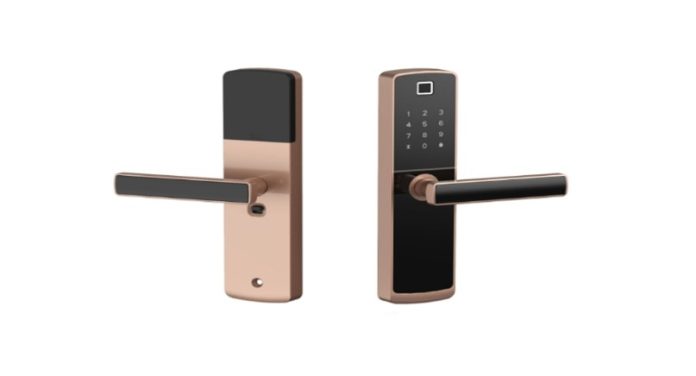Securing your property is a critical concern for anyone at home, office or any other facility. More advanced security solutions are quickly supplementing traditional locks and keys. Two popular options are the touch lockand the keypad lock. Both have unique strengths and applications, making the decision crucial based on specific needs.
Here’s a rundown of these two types of locks to help you make an informed choice that enhances security and convenience.
Understanding Touch Locks
A touch lock is an electronic lock typically operates on a touch-screen panel. These locks are known for their sleek design and user-friendly interface. They work by recognising a pre-programmed physical touch pattern or even by biometric verification, such as fingerprints. One of the main advantages of such locks is their enhanced security features. Since they do not require a physical key, they are less vulnerable to traditional lock-picking methods.
Benefits of Touch Locks
Enhanced Security: These locks utilise advanced security measures such as biometric authentication, including fingerprint, facial, or retina scans, providing a unique safeguard against unauthorised access. This biometric data is coupled with sophisticated encryption protocols to ensure that stored data cannot be easily compromised or duplicated, offering superior protection to traditional locks.
Ease of Use: Their intuitive operation allows for a seamless user experience. Users can place their finger or make a quick swipe gesture to gain entry. This one-touch access eliminates the need to remember complex codes or carry physical keys, thereby speeding up entry processes and reducing bottlenecks in high-traffic environments.
Aesthetic Appeal: Often designed with sleek, contemporary aesthetics, these locks can significantly enhance a property’s visual appeal. Their modern and minimalistic look integrates well with cutting-edge architectural styles. It can add a touch of sophistication to exterior and interior doors, aligning with the contemporary decor of upscale homes and businesses.
Understanding Keypad Locks
On the other hand, a keypad lock involves entering a numeric or alphanumeric code on a keypad to gain entry. This type of lock is versatile and can be used in various settings, from residential homes to high-security areas within commercial buildings. Locks with keypads eliminate the need for physical keys but require users to remember their access codes.
Benefits of Keypad Locks
No Physical Keys Needed: Eliminating physical keys reduces the risk of theft or copying and removes the hassle of managing and distributing keys among users. This keyless approach simplifies access management significantly, particularly in settings with high user turnover.
Multiple User Codes: Locks with keypads can be programmed with different access codes, allowing specific codes to be assigned to other individuals. This feature is particularly beneficial in multi-user environments like offices or residential complexes, as it enables easy access control and can be quickly changed or revoked without the need to alter physical locks.
Programmable Features: The flexibility to program various functionalities, such as auto-locking, adds a layer of security by ensuring that doors are never inadvertently left unlocked. Additionally, features like setting temporary access codes or scheduling access times can significantly enhance operational convenience and control, especially in commercial settings where access needs vary.
Choosing Between Touch Locks and Keypad Locks
When deciding whether a touch lock or a keypad lock is better suited for your needs, consider the following factors:
Security Requirements: If security is a paramount concern, particularly if you need to secure sensitive or high-value areas, touch-based locks might be the more suitable option due to their advanced security features and biometric capabilities.
User Convenience: If ease of use is your priority, locks programmed on touch technology offer a quicker and user-friendly interface. Locks with keypads are also relatively straightforward and can be more familiar to some users.
Installation and Maintenance: Consider the installation process and the ongoing maintenance each type of lock requires. Locks operating on touch technology may require more complex installation and regular software updates than locks with keypads.
Budget Considerations: Evaluate your budget, as locks with touch technology can be more expensive than locks with keypads due to their advanced technology and features.
Application Scenarios
Home Use: Keypad locks often provide sufficient security and convenience for residential properties. They are easy to install and manage.
Commercial Use: In a business setting where security might be more critical, a touch lock with biometric capabilities provides an added layer of protection and can be integrated with other security systems.
Conclusion
Choosing the right access control system, whether a touch lock or a keypad lock,depends significantly on your specific security needs, budget, and preference for convenience. Locks operating on touch technology offer cutting-edge security with stylish interfaces, making them ideal for modern businesses and tech-savvy users. Locks with keypads, while slightly less sophisticated, provide reliable security with the convenience of code access, suitable for various settings, including homes and offices. By carefully assessing your needs against the features of each type of lock, you can secure your premises effectively and efficiently.
Also Read: How to know your polling booth (polling station) to cast a vote in 1 minute?


